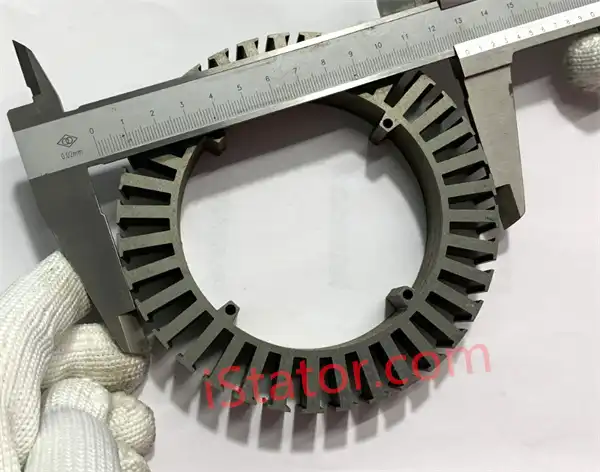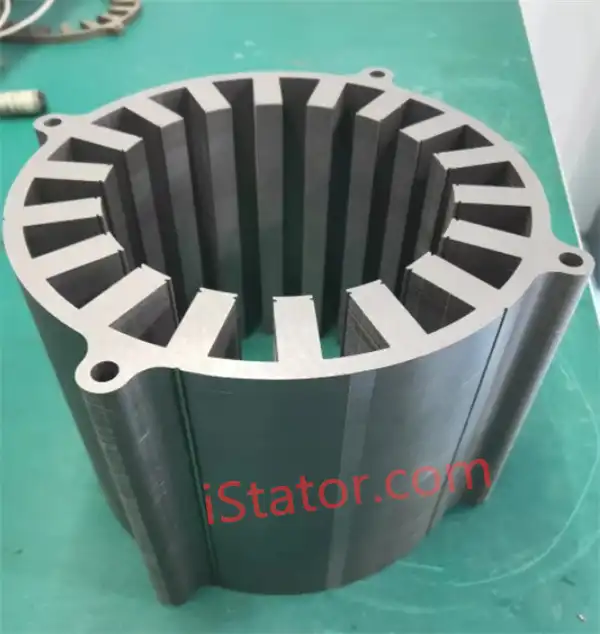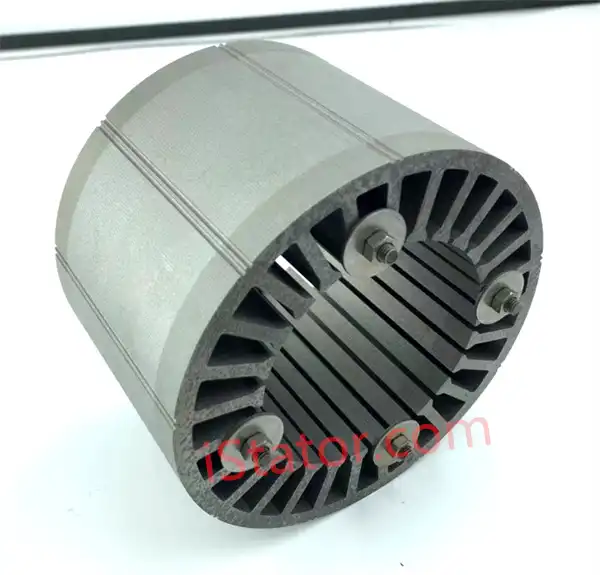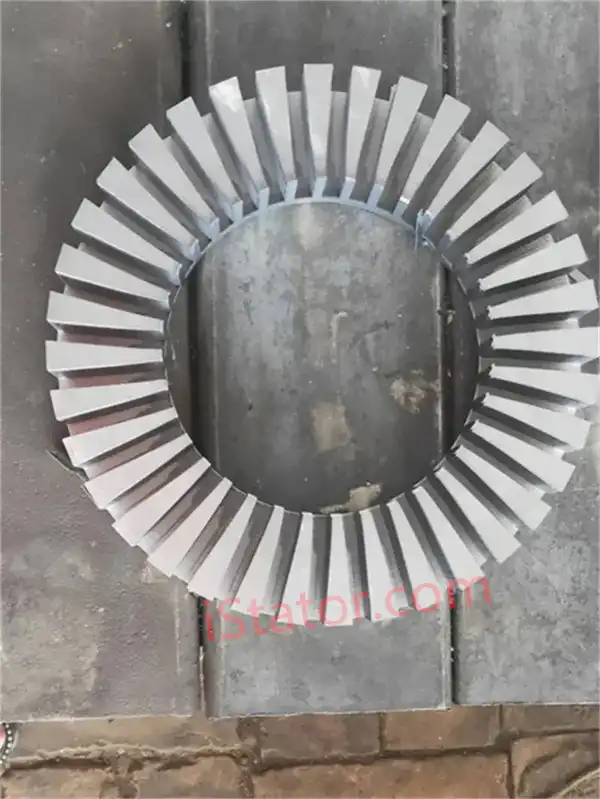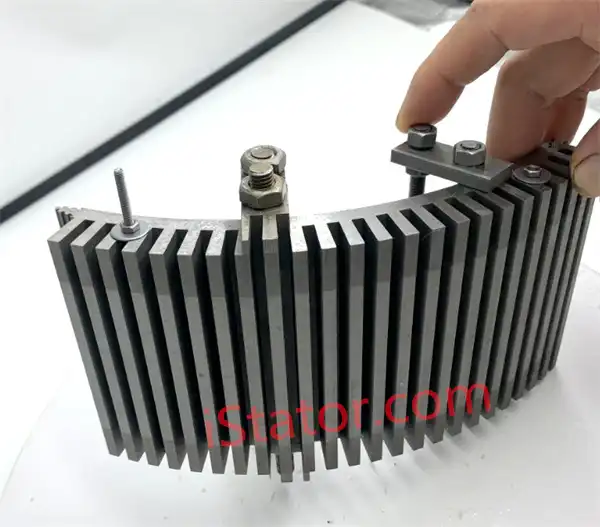Get superior self-bonding lamination stacks in China. Innovative designs for unmatched durability and efficiency in your industrial projects.
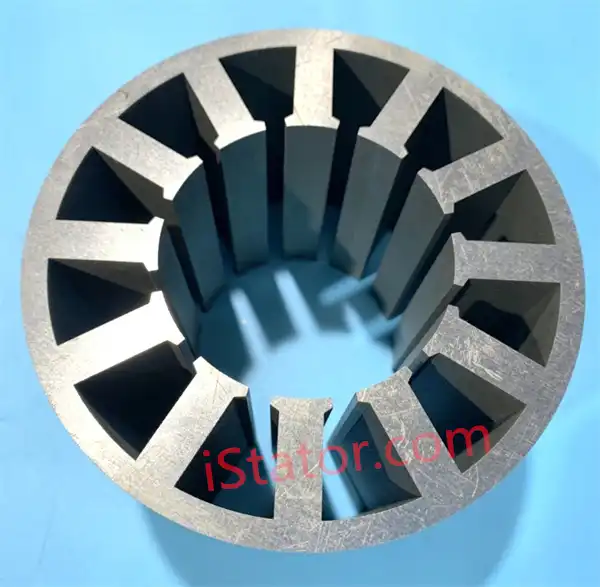
Full-Face Bonding — Our Most Non-Damaging Technique In Producing Stator And Rotor Cores
Self-bonding lamination stacks, also known as full-face bonding, offer exceptional performance and reliability in motor manufacturing. This advanced joining technique ensures enhanced structural integrity, reduced vibration, and superior thermal and electrical conductivity.
Self-bonding provides a cleaner and more environmentally friendly solution by eliminating the need for interlocking or welding. We also provide glue bonding lamination stacks.
Self-Bonding Electrical Steel Laminations Technology
Self-bonded motor core is an innovative stator core manufacturing process. In fact, self-bonded iron core can be regarded as a variant of the bonded iron core.
It uses a special functional coating to tightly bond the stator core pieces to achieve an integral connection. Through the self-bonding process, the structural strength and geometric tolerance of the stator core can be effectively improved.
The key to this lamination bonding process is the correct selection and use of self-adhesive coatings, as well as strict control to ensure the quality and stability of the stator core.
The self-bonded core process uses special coatings and high-temperature curing to tightly bond the core sheets, thereby significantly improving the strength of the overall structure.
Self-Bonding Lamination Stacks Products
Ultra-thin electrical steel sheets are difficult to form riveting points or interlocking points, and laser welding may cause local conduction, which is detrimental to motor performance. Therefore, self-bonded iron cores have become an ideal choice to solve the problem of lamination and assembly of ultra-thin silicon steel sheets.
Advantages Of Full-Surface Bonding With Backlack
Freedom Of Design
Full-surface bonding with Backlack allows for greater flexibility in motor design. Engineers can create intricate and optimized designs without the constraints imposed by traditional bonding methods.
Mechanical Stability And Dimensional Accuracy
This bonding technique ensures high mechanical stability and precise dimensional accuracy. The result is robust and reliable motor cores that maintain their structural integrity under various operating conditions.
Maintenance Of Magnetic Properties
Backlack bonding preserves the magnetic properties of the laminations, ensuring optimal performance and efficiency of the motor.
Improved Thermal Conductivity
The full-surface bonding enhances thermal conductivity, allowing for better heat dissipation and improved overall motor performance.
Increased Vehicle Range
For electric vehicles, the improved efficiency and reduced energy losses from full-surface bonding contribute to an increased vehicle range, making it a preferred choice for modern automotive applications.
Reduced Vibrations And Noise
This method significantly reduces vibrations and noise, leading to quieter motor operation and enhanced user experience.
Conventional Stacking Techniques For Electrical Steel Lamination Stacks
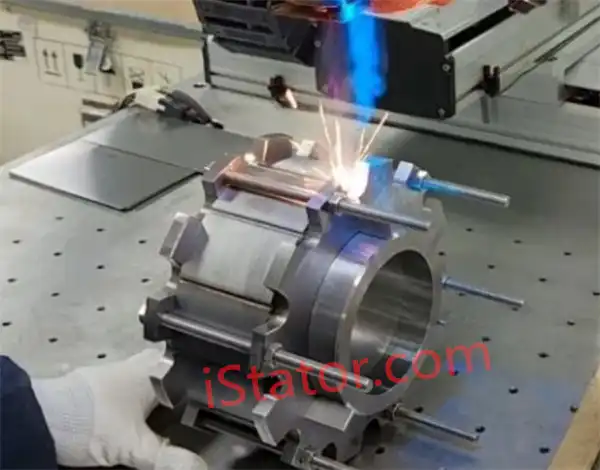
Laser Welding
This technique uses a high-powered laser to weld the laminations together at specific points. Laser welding provides a strong bond and precise alignment but can introduce localized heating.
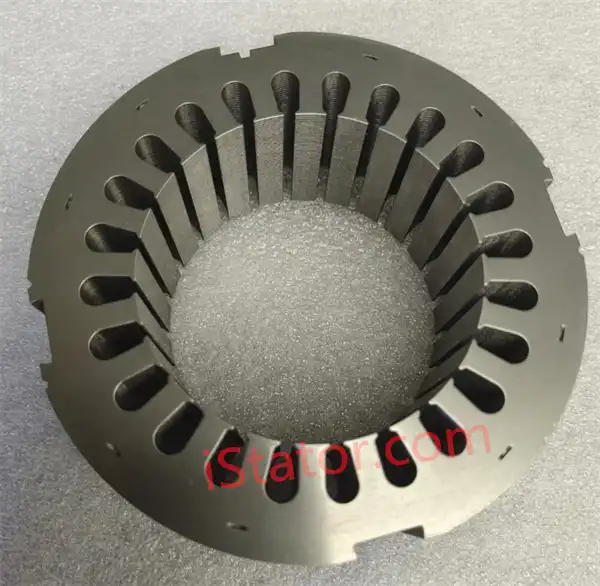
Interlocking
Interlocking involves creating tabs and slots on the edges of the laminations, allowing them to snap together without the need for additional bonding agents.
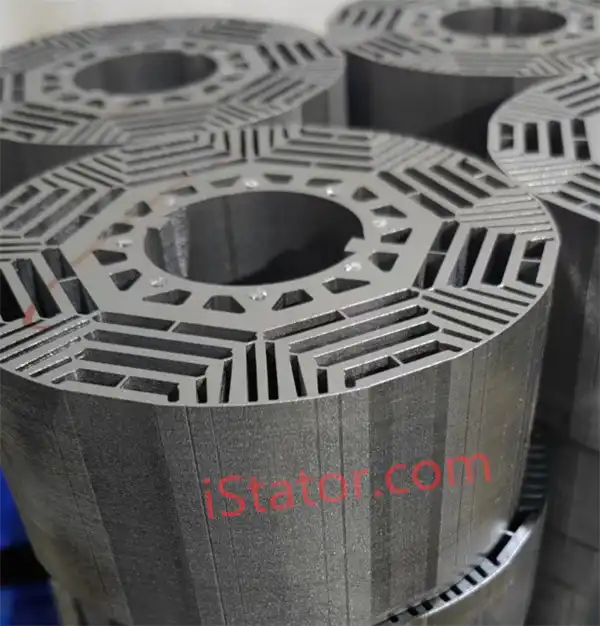
Riveting
Riveting uses mechanical fasteners to hold the laminations together. This method is reliable and easy to implement but can add weight and create stress points within the stack.
Quality Control For Adhesive Rotor And Stator Laminations
Verify that the adhesive and laminations meet the specified standards and requirements. This includes checking for proper labeling, batch numbers, and documentation.
Ensure that the adhesive is applied correctly, in the right amount, and with uniform coverage. This can be done through visual inspection, weight measurements, or other methods.
Monitor the bonding process to ensure that the laminations are properly aligned and bonded together with the adhesive. We may involve fixtures, monitoring temperature and pressure, and conducting spot checks.
Inspect the bonded laminations for any defects, such as delamination, voids, or uneven bonding. This can be done through visual inspection, ultrasonic testing, or other non-destructive testing methods.
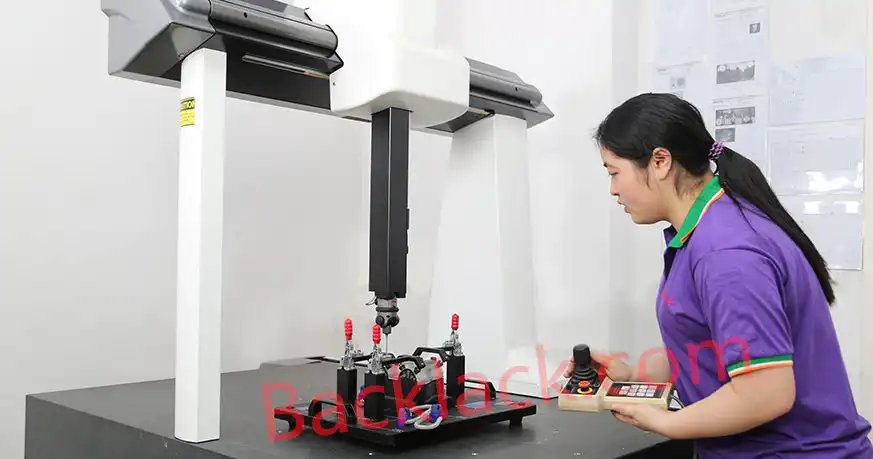
FAQS
Can Self Bonding Stack Laminations Be Customized?
Yes, self-bonding motor components can be customized to meet specific requirements and optimal motor performance, such as size, shape, and magnetic properties. This allows for greater flexibility in motor design and optimization.
What Are The Primary Benefits Of Self-Bonding Technology In Motor Lamination Stacks?
Self-bonding technology in motor lamination stacks offers enhanced efficiency, reduced noise and vibration, and improved thermal management. This technology enables more compact motor designs, crucial for space-sensitive applications. It also ensures higher precision and uniformity in the motor core, leading to better performance and longevity of electric motors.
Applications Of Self-Bonding Motor Laminations
Self-bonding lamination stacks are most commonly used in new energy vehicle motors. They are also ideal for various other applications, including industrial motors, traction motors, renewable energy systems, and high-performance electric motors, offering enhanced efficiency, reduced noise, and improved durability across different sectors.
What Are The Challenges Of Self-Bonding Lamination Stacks?
Ensuring the consistency of coating thickness on the surface of the silicon steel sheet is a primary challenge. Additionally, managing the storage and timeliness of bonding varnish demands precision processing and testing equipment. These factors are crucial to maintaining the high-quality standards and performance of self-bonding lamination stacks.
What Are The Adhesive Materials Of Self-Bonding Motor Core?
The adhesive materials of self-bonding motor cores are typically EB540, EB546, EB548, EB549, and EB549 fast.
EB549 and EB549 fast are primarily used in new energy vehicle drive motors and small to medium-sized motor cores, providing excellent performance and reliability in these applications.
What Materials Are Commonly Used In Self-Bonding Motor Laminations?
The most commonly used materials in self-bonding motor laminations are silicon steel and nickel-iron alloys. These materials are chosen for their excellent magnetic properties, which are crucial for efficient motor operation. Silicon steel, also electrical steel, in particular, is favored for its low core loss and high permeability, making it ideal for high-efficiency electric motors. Including 10JNEX900 material from Japan's Kawasaki Corporation, with a thickness of 0.1MM.
How Do Self-Bonding Motor Laminates Work?
Lamination bonding represents a groundbreaking advancement in motor manufacturing. Self-bonding motor laminations work through a heat treatment process that activates their bonding properties. When subjected to heat, the laminations bond together at the molecular level, creating a seamless and strong connection.
Enhance Your Motor Efficiency With Our Self-Bonding Laminations!
Upgrade your electric motor performance with our rotor and stator bonding lamination stacks services. Customize your laminations with us to meet your unique motor requirements.
You might also be interested in
